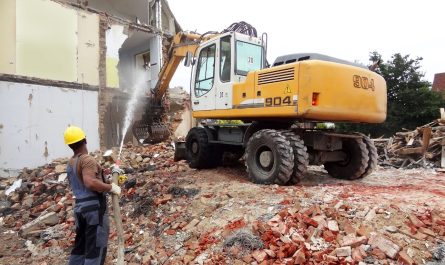Improving your landscaping is a great way to add some charm and personality to your home. But plants require constant maintenance and upkeep and mulch needs to be replaced every year. So what no-hassle options do you have?
One of the best ways to elevate your landscaping without committing to more outdoor chores is by adding rocks. Spread it in your flowerbeds, walkways, or other spaces to give it a clean and elegant appearance. Best of all, landscaping rock is durable, comes in various styles, and requires minimal to no maintenance!
Before you head out to purchase landscape rock, it’s important to learn which type is most adequate for your property and the look you want to achieve. This post will discuss the different types of landscaping rock, so stick around! Plus, we’ll give you some ideas for using rocks for landscaping.
River Rocks
River rocks come in a variety of colors and sizes, but they are always larger than an inch in diameter. They are excellent in areas that require more drainage, perhaps where water tends to pool in your yard.
However, you can also use them for decoration due to their attractive appearance. We recommend using varying sizes of river rock and large boulders as accents to create a natural look.
To keep your river rock landscape low-hassle, install landscape fabric underneath it. This will keep weeds from growing up between the cracks. If there are a lot of trees nearby, it’s a good idea to use a blower to remove leaves from river rock landscaping every once and a while.
Decomposed Granite
Decomposed granite is weathered to the point that it nearly pulverizes. The very small pieces of rock are a tawny color that eventually fades to a light tan over the years.
This type of rock has a rustic look and is great for paths, walkways, and patios. Some people like to spread it around plants, especially in warm and dry climates where cactus gardens are possible.
For the best results, you should apply decomposed granite in thin layers, not all at once. Water and tamp down each layer before adding another, as this creates a compact surface. To keep the weeds at bay, use landscape fabric underneath and apply an organic herbicide as needed.
One of the downsides to this rock is that it can easily get stuck on the bottom of your shoes, which means it can get tracked into the house. You may also need to add a fresh layer every couple of years to keep it looking its best.
Pea Gravel
Pea gravel gets its name from its small and round size which is approximately equivalent to a pea. However, there are different sizes, ranging from 1/4 inch to 5/8 inch. You can also pick from a number of colors, including brown, white, or tan.
Pea gravel is an attractive choice for pathways or patios. You can also use it to fill in areas around larger stones but remember to use a barrier to keep it in place. Because of its small size, it can easily shift to surrounding spaces.
Mexican Beach Pebble
These small rocks are perfect for a zen garden because of their distinguished appearance. Smooth, round, and uniform with a dark gray color, Mexican beach pebbles can be a little more expensive than other landscaping rocks discussed in this post. However, if you have the budget, the look that this groundcover provides is definitely worth the investment.
Use them around water features, to fill in areas around accent boulders, or for flowerbeds. As with the other rock options, be sure to place landscaping fabric underneath and use a leaf blower every so often to keep weeds from taking over.
White Marble Chips
White marble is a beautiful alternative to gravel. It can be used to add some character and brightens up shaded spaces. Whether in driveways, walkways, or flower beds, marble is sophisticated and has a sparkly polished look in the sunlight. Plus, it doesn’t heat up as much as darker rocks.
Similar to pea gravel, white marble chips are small, and the areas where you lay them should have some kind of edging to keep them from spilling over.
Lava Rocks
Lava rocks are made from hardened lava and are usually red or black. The red lava rock is the more popular, especially on properties with brick buildings. Meanwhile, the black color is perfect for Polenesian-themed gardens, adding high contrast and texture.
One of the great things about it is that the porous nature of the rock reduces the need for irrigation, making it ideal for low-maintenance flower beds.
Crushed Stone
These landscape rocks are created by processing limestone or other rocks in a stone crusher. The result is smaller, finer pieces that can be used as a surface for driving or walking. It’s more stable and has good drainage, perfect for hilly areas or places that have a lot of rain.
You can also use crushed stone in flowerbeds or around borders. The key to keeping it looking great without much effort is proper edging and an organic herbicide.
Choose a Landscaping Rock You Love
One of the reasons that choosing a landscaping rock you’re happy with is so important is that it will last years. You don’t want to get stuck with one you don’t like. By using the tips in this post and speaking to professionals, you’ll be more likely to get a result that makes you smile.
If you want to learn more helpful tips that can help you navigate life with more knowledge, browse the articles on our blog. From technology to rock landscaping ideas, we know it all and want to share it with you!


